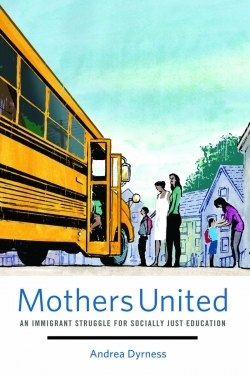Mothers United
An Immigrant Struggle for Socially Just Education
A dozen children of different ages sit on benches in a sunlit room in The Country School, Winslow Homer’s 1871 painting. The teacher looks at the three boys to her right; like most of the other children in the painting, they are reading; nothing distracts them from their books. The tables and benches are set against the walls, leaving a large space in the middle, occupied only by the wooden boards of the floor.
In Mothers United: An Immigrant Struggle for Socially Just Education, Andrea Dyrness, an assistant professor of educational studies at Trinity College in Hartford, Connecticut, describes a different kind of school. Located in a neighborhood in Oakland, California, that drew immigrants from Mexico and Central America, the elementary school served 1,400 students in a building meant to accommodate half that number. School officials, in an effort to tackle the shortage of space, asked students to stagger their vacation breaks; every month the children, and their teachers, packed up and moved to a different classroom as another group, back from vacation, moved in. Dyrness admits she never understood how the system saved space. Parents, teachers, and students shared her confusion. In 1999, fed up with the large, crowded schools and poor academic performance, parents and community leaders demanded smaller schools. By 2007, forty-eight new small schools opened in Oakland, transforming not only the educational landscape but also the lives of teachers and school administrators. “I was more of a glorified cop than anything else,” said one principal about his earlier job at a large school; the reforms turned him into an “an instructional leader.”
Mothers United is the story of five mothers who responded to the call from the school district to join teachers in designing a new elementary school but repeatedly saw their ideas shot down by educators. Dyrness recounts how the teachers, favoring multiage classrooms, brushed aside parents’ concerns about mixed-age groups; they talked often about social justice yet “prioritized professional expertise over relationship building.” Seen as troublemakers, but determined to improve the school, the mothers sought the opinions of students, parents, and teachers through interviews and shared their findings with school staff, finally winning their trust and also space in the school for a parent center.
Educational policymakers often depend on numbers from large national studies to support their choices. This persuasive book will help them see why the testimony of parents, teachers, and students matters as much for school-level decisions.
Reviewed by
Karunesh Tuli
Disclosure: This article is not an endorsement, but a review. The publisher of this book provided free copies of the book to have their book reviewed by a professional reviewer. No fee was paid by the publisher for this review. Foreword Reviews only recommends books that we love. Foreword Magazine, Inc. is disclosing this in accordance with the Federal Trade Commission’s 16 CFR, Part 255.

